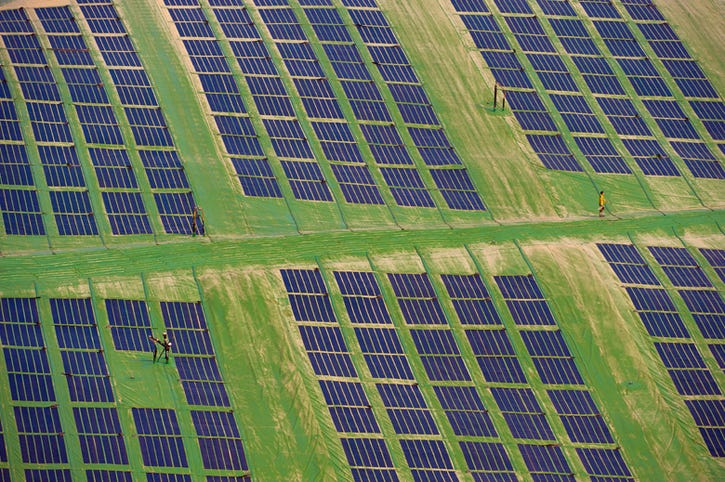Planning for landfill design and operations to accommodate every stage of a facility’s life and beyond takes foresight. There’s especially a multitude of considerations when owners are contemplating reuse, as many are. One growing trend in particular is to set up these sites for solar projects; more than 150 shuttered U.S. landfills house such projects, according to the U.S. Environmental Protection Agency.
Solar projects can generate income through electricity sales or from renewable energy credits. But how does one plan for solar years in advance while juggling daily operations of an active site and thinking about post-closure?
Waste360 spoke with solar project developers and engineers who answered these questions. They advised on considerations associated with slopes, caps, membrane linings and permits, so once it’s time to make the conversion, the project runs as smoothly and cost effectively as possible. Solar experts even touched on a less-common scenario: launching a project ahead of closure.
“Always begin with the end in mind and know it’s never too early to plan and think of alternate uses, regardless of the type of waste facility. Solar is often viable. But it depends on how the landfill was designed to function and how it was closed,” says Gretchen Dolson, renewable energy lead for HDR, an architectural, engineering and consulting firm based in Omaha, Neb.

Years before deploying solar, landfill owners should think about how the project will interact with existing venting and methane recapture infrastructure.
They generate the most lease revenue if they plan for the largest project possible, with uniform solar rows and spacing for more panel density to maximize production from that land.
“But sometimes layout of methane extraction systems makes it more challenging. So, make sure the methane capture systems and venting are laid out to allow for as much solar generation capacity as possible,” says Chad Farrell, CEO of Encore Renewable Energy in Burlington, Vt.
Systems can be designed with wells and other equipment placed between locations where panels would be installed. Operators already working with solar developers can learn from them in advance where those rows of panels would be sited.
A larger barrier, say project developers, is steep slopes.
“We can’t install solar on over about a 15-degree slope, and if there are just a couple of acres to work with, it’s especially hard. We need large, open, flat parcels. So, if flat, capped landfills could be part of post-closure planning that would help,” says Farrell.
With unavoidable steep slopes, if they are at the edge of a surface that’s otherwise relatively flat, post-closure plans can include a capped system that minimizes the slope. Otherwise the ballast blocks used to anchor panels will slide.

Another “controllable” is a stormwater management plan. Retention facilities can be designed in advance to handle additional runoff.
“When we pursue permits, we have to prove to regulators that we are not going to compromise the integrity of the cap as it can exacerbate erosion. Stormwater runoff systems designed for closed capped landfills is one thing. But stormwater with solar is another. So, if stormwater retention can be sized with consideration for solar, it makes the site more attractive to developers,” says Farrell.
Vegetative covers, which are emerging as an alternative to traditional covers, can be problematic for these projects. It’s some of the worst material for a solar site because it grows tall, cautions Dolson.
“So instead of a 2-foot vegetative cover as part of the closure plan, operators could include a 5- or 6-foot earthen cover to be able to drive piles without penetrating the liner,” she says.
When it comes to the liner itself, a large conduit can be placed on top of it for access for future solar electrical installation.
While launching solar on active sites is not nearly as common, PV Navigator in Brea, Calif., has taken on such projects. It works best if cells are closed in stages, although these projects are limited to the size of the closed cells.
“There may be separate interconnection agreements and separate power purchase agreements [for each section added on]. Though we may be able to design the interconnection for the whole project at once. And we may be able to do environmental permitting at once,” says Robert Fritz, project manager for PV Navigator.

For those engaged in the closure process, Mark Roberts, vice president of HDR, advises landfill owners to work with regulators on limitations or constraints.
For instance, “Regulators may not allow any electrical systems or components on the cap out of concern of fire hazards. But many risks can be mitigated; in this case, it could be a fire prevention plan. Ask regulators what their concerns are—whether fire or other—and know you may have to address them,” he says.
Having environmental permit exemptions in place enabling solar as an end use would spare developers of a huge headache, advises Fritz.
“If operators write closure documents with language that would allow onsite solar, it could potentially save years. Environmental permitting, especially in California, can be long,” he says.
About the Author(s)
You May Also Like




